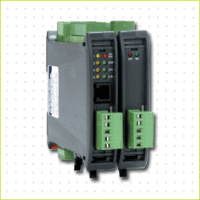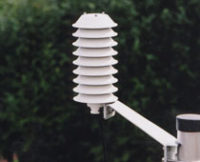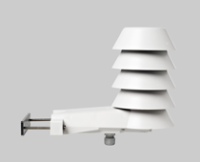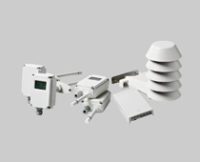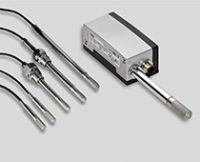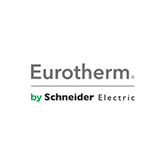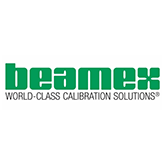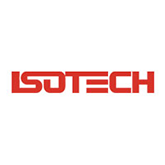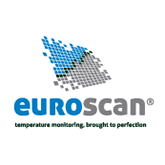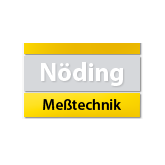Product Description
RFS DIN Rail Temperature Controller
RFS DIN Rail Temperature Controller
Designed to offer outstanding control performance and provide a comprehensive solution for a wide variety of applications; such as food processing, plastic manufacturing, and process applications requiring heat/cool control and process protection alarms in a compact DIN rail mounted package.
Universal thermocouple or RTD input coupled with a responsive SMART auto-tuning PID control algorithm that is equipped with special functions, including soft start and nonlinear cooling. A complete set of process protection alarm functions; high and low limit, band and deviation are included.
Modular interconnection allows simultaneous connection of all common instrument elements: power supply, serial interface, logic input and open collector output for common alarms. The RFS-AL alarm-logic input expansion unit makes use of the modular interconnection function to provide additional I/O capacity.
Synchronized pre-heating
Eliminates differential heating during startup due to different heat rates of individual heaters in applications such as extruders and injection hot runner control. The setpoint ramp rates of all heating zones within a group are synchronized by “holding back” the ramping setpoint. In order to achieve this, the individual loop band alarms are controlled by the common alarm output and isolated logic input functions
PC interface port + OPC based configuration software
The integrated configuration port uses special software and an adaptor allowing:
- Easy configuration of the instrument, with descriptions of the parameters and the relative limits.
- Computer storage of the complete configuration allowing it to be copied to other RFS units.
- Copying and cloning of the configuration to a new instrument.
- The configuration interface port can be used for configuration and for monitoring the process during setup.
Smart tuning
Automatically adjusts the PID parameters according to the process dynamics. An important characteristic of the Eurotherm Controls continuous self tuning algorithm is its ability to optimize control parameters without injecting any artificial disturbances into the system.
Sequential addresses (Modbus) for commonly accessed parameters
To maximize the data transfer rates between the RFS and the host supervisory system, important operating parameters are grouped. Digital status information is transferred as data words to increase efficiency. The RFS is able to communicate relevant parameter information with a single data request, instead of a series of separate address operations.
Process protection alarms
Process (high or low limit), Band and Deviation alarm outputs are available with the additional flexibility of latching and masking functions until the process variable reaches the alarm threshold. Band and Deviation alarms are also masked after a setpoint change until the process variable reaches the alarm threshold. The alarm latching function holds the alarm on until it is acknowledged.
Startup energy management
To reduce the maximum electrical loading at machine startup, the sequence of the RFS control outputs is scheduled according to the selected instrument Modbus address. This significantly reduces maximum startup current requirements and offers potential savings in electrical installation capacity and cabling specification requirements.
Communication availability of I/O
All RFS I/O can be read directly over the Modbus communication interface by the host supervisory system. Additionally, the communication host can write to RFS outputs that are not assigned as alarm or status functions. This expands available PLC and host supervisory system I/O, simplifies machine troubleshooting and provides the ability to perform remote diagnostics.
OFD – output failure detection (optional)
Using the CT input, the output failure detection function monitors the current in the load driven by output 1. Load and actuator protection is provided in the following manner:
During the ON period of the output, the instrument measures the current through the load and generates an alarm condition if the current is lower than a pre-programmed threshold. A low current indicates a partial or total breakdown of the load or actuator SSR.
During the OFF period of the output, the instrument measures the leakage current through the load and generates an alarm condition if the current is higher than a pre-programmed threshold value. A high leakage current indicates a short circuit of the actuator.
Case:
PC/ABS grey
Self-extinguishing degree:
V0 according to UL 746C
Front protection:
IP20
Dimensions:
131 x 117 x 22.5mm
Weight:
250g max.
Power supply:
switching 24VAC/VDC (±10% of nominal value)
Power consumption:
6VA
Insulation:
reinforced insulation is guaranteed between supply input, instrument inputs and outputs
Common mode rejection:
120dB @ 50/60Hz
Normal mode rejection:
60dB @ 50/60Hz
Installation:
DIN rail mounting
Installation category:
II
EMC/Safety:
CE certified; compliant with regs 89/336/EEC (harmonized reference standard EN-50081-2 and EN- 50082-2) and 73/23/EEC e 93/68/EEC (harmonized reference standard EN 61010-1)
Sampling time:
- 250mSec for linear inputs
- 500mSec for TC or RTD inputs
Accuracy:
±0.2% f.s.v. @ 25°C with nominal supply voltage
Operating temperature:
0 to +50°C
Storage temperature:
-20 to +70°C
Humidity:
20% to 85% RH, non-condensing
All inputs are configurable and calibrated at the factory.
RTD Input
- Type:3-wire Pt100
- Calibration: according to DIN 43760
- Measuring current: 130µA
- Line resistance: auto-compensation up to 20 ohms per wire with no measurable error
- Engineering units: programmable ºC or ºF
- Sensor break: indicates break of sensor or one or more wires; indicates short circuit when sensor resistance <12 ohms
RTD Pt100 3-wire
°C -200.0/400.0 -200/800
°F -200.0/400.0 -330/1470
Linear Inputs
- Scaling: programmable from keyboard -2000 to 4000
- Decimal point: programmable to any position
Input
0-20 mA 4-20 mA 0-60 mV 12-60 mV
Impedance
<5 ohms <5 ohms >1M ohms >1M ohms
Thermocouple Input
- Sensor break: open circuit sensor break detection
- Cold junction compensation: automatic compensation of temperature beween 0 and 50ºC
- Cold junction compensation error: 0.1ºC/ºC
- Input impedance: 1M ohms
- Calibration: according to IEC 584-1: 1995; DIN 43710-1977 for TC type L
Logic Input
- Function: selection of the operating setpoint (SP or SP2) or of the temporary block of setpoint ramp
- Type: dry contact excitation 8V, 8mA
- Insulation: functional insulation
- Insulation voltage: 50Vrms
Current Transformer Input
- Input current: 50mA, 50/60Hz
- Full scale range: 0-10A, 0-100A (configurable)
- Resolution: 0-20A: 0.1A
- 21-100A: 1A
- Programmable output: NO or NC relay control output; Logic level 1 or 0; SSR control output
- Minimum period: On and Off: 400mSec
Output 1 and 2 – SSR
Function:
control output
Type: non-isolated Logic level 1:
- 27VDC max. @ 1mA
- 14VDC min. @ 20mA
Logic level 0:
< 0.5V
Relay Type
- Output 1 Function: control output
- Type: SPST
- Contact load: 3A @ 250VAC max. on resistive load
- Output 2 Function: control output or alarm
- Type: relay with SPST contact
- Contact load: 3A @ 250VAC max. on resistive load
- Output 3 Function: alarm output
- Type: relay with SPDT contact
- Contact load: 3A @ 250VAC max. on resistive load
- Output 4 Function: group alarm (common output)
- Type: open collector
- Contact load: 20mA max. @ 48V
Control Action
- Type: one (heating) or two (heating/cooling) control outputs
- Output action: time proportioning
- Control action: ON/OFF PI or PID + SMART
- Proportional band: 1.0% to 100.0% of the input range for one control element;
- 1.5% to 100.0% of the input range for two control elements;
- Setting PB = 0 causes ON/OFF control
Hysteresis:
programmable from 0.1% to 10.0% of the input span
Integral time:
programmable from 1 second to 20 minutes (or none)
Derivative time:
programmable from 1 second to 10 minutes (or none)
Integral offset:
for one control element (heating), the offset is programmable from 0 to 100% of the output range; for two control elements (heating/cooling) the offset is programmable from -100% to +100% of the output range
Output 1 cycle time:
- 1 second to 200 seconds
- Manual to Auto: bumpless
Output 2 relative gain:
Programmable from 0.20 to 1.00 of the proportional band
Output 2 cycle time:
1 second to 200 seconds
Overlap/deadband:
programmable from -20% (deadband) to +50% (overlap) of the proportional band
Dual Setpoint Selection
Two user configurable operation setpoints are selectable through logic input or the communication interface. For ON/OFF control action, this provides a method for fast and convenient run-hold switching, either by an external switch or by a host supervisory system.
Alarms
- Alarm action: direct or inverse
- Alarm functions: configurable as process, band or deviation alarms
- Alarm reset: programmable as automatic or manual
- Alarm masking: configurable as masked or unmasked alarms
- Hysteresis: 0.1 to 10.0% of input
Serial Interface
- Type: isolated RS-485
- Protocol: Modbus (2-wire)
- Baud rate: 600 to 19200 BAUD
- Byte format: 8 bit
- Parity: even, odd or none
- Stop bit: one
- Address: 1 to 254
- Voltage levels: according to EIA comm standard
Line loading:
1/4 unit load

